High Purity Zirconium Oxide
DTA Calibration Samples
LiNbO3
PbTiO3
SrCO3
K2SO4
The MPN measurement system can accommodate samples either in loose powder form, or as stacked pressed pellets or as a single solid piece (usually cut by diamond sawing or by diamond core-drilling). This allows the experimenter the option of choosing the physical state required, and, more importantly for practical applications, to do the measurements at the required density!
Dielectric Properties of Pressed Pellets of High Purity ( 99.9975%) Zirconium Oxide Powder from Johnson & Matthey
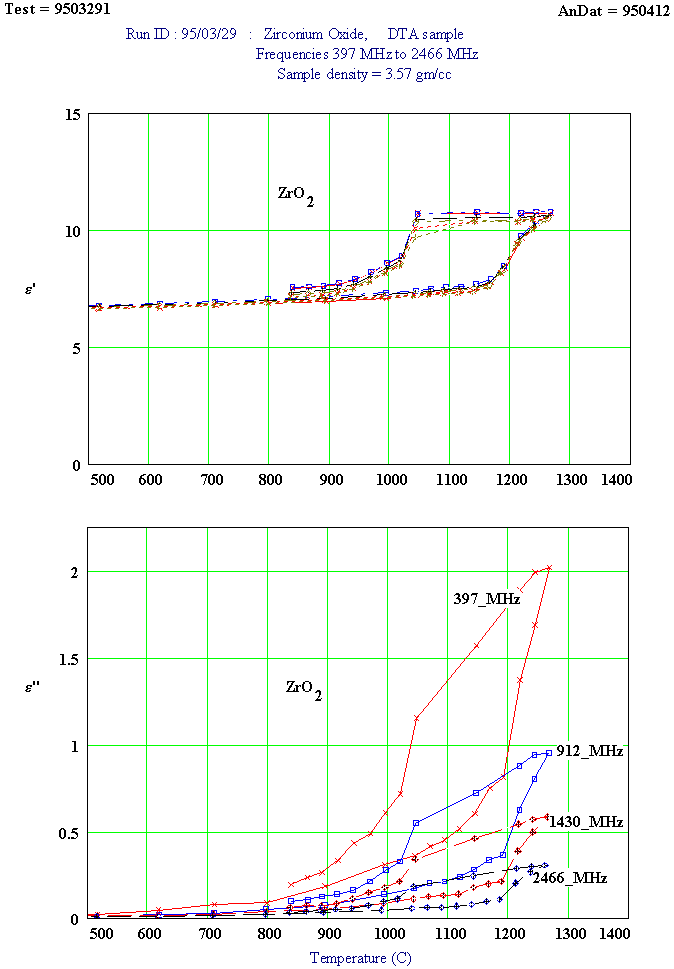
Three pressed pellets were stacked to form the test sample. The temperature was taken in steps up to 1275ºC, and then back to down to ~ 850ºC, with measurements taken at each frequency at each temperature step. Note the hysteresis associated with the well-known monoclinic ( low temperature) to tetragonal ( high temperature) transition at ~ 1100ºC, which has an associated 9% volume contraction when going from low to high temperature!
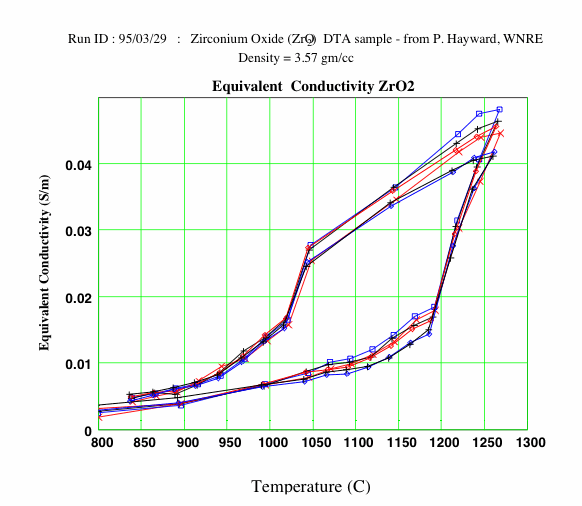
The "equivalent conductivity" is obtained by multiplying the ε" value by the frequency and by the permittivity of free space ( see theory section). If the loss mechanism is conduction electrons, then the equivalent conductivity values should be independent of frequency, since electron conductivity is effectively independent of frequency. This seems to be the case here for Zirconium Dioxide.
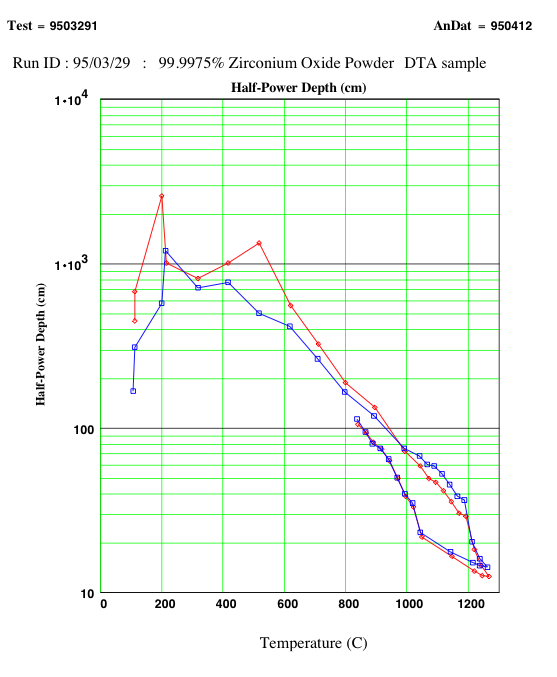
Differential Thermal Analysis (DTA) Calibration Samples – Comparison of Scanned Dielectric Constant Analysis (SDA) with DTA
SDA is a thermal analysis technique that is related to differential thermal analysis (DTA), thermogravimetric analysis (TGA), differential scanning calorimetery (DSC) and dynamic mechanical analysis (DMA), but is based on measurements of dielectric property changes during thermal ramping, rather than weight change, heat evolution or mechanical damping. For a stable, thermally reversible material, SDA measures the two numbers of dielectric response (the real, ε′, and absorptive, ε′′, parts) as a function of temperature. For a thermally irreversible process (phase transformation or thermal reaction), not only are the initial and final state dielectric properties measured, but the dielectric response due to transient species may also be seen.
The real part of the rf/microwave dielectric constant, ε′, is especially sensitive to small changes in the distance and distribution of neighbouring ions or atoms, and to the hindering of the re-orientation of a molecule or ion having a electric dipole. The absorptive part, ε′′, is strongly dependent on the electron/hole or ionic conduction characteristics (band gap energy, band population, impurity concentrations, collision rates), or on the number and relaxation rate of any dipole moment.
The following comparisons of DTA and SDA show that one technique is often much more sensitive to the phase transition that the other!
TABLE I List of properties of selected solid state phase transitions.
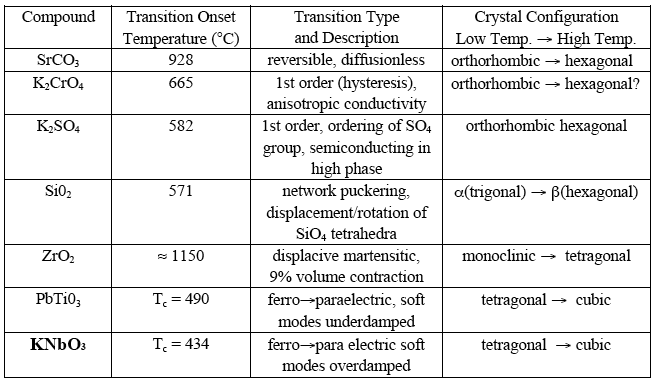
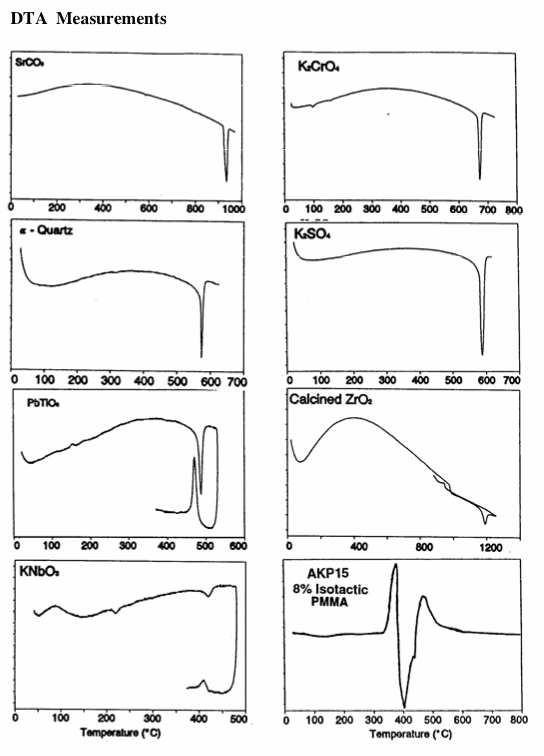
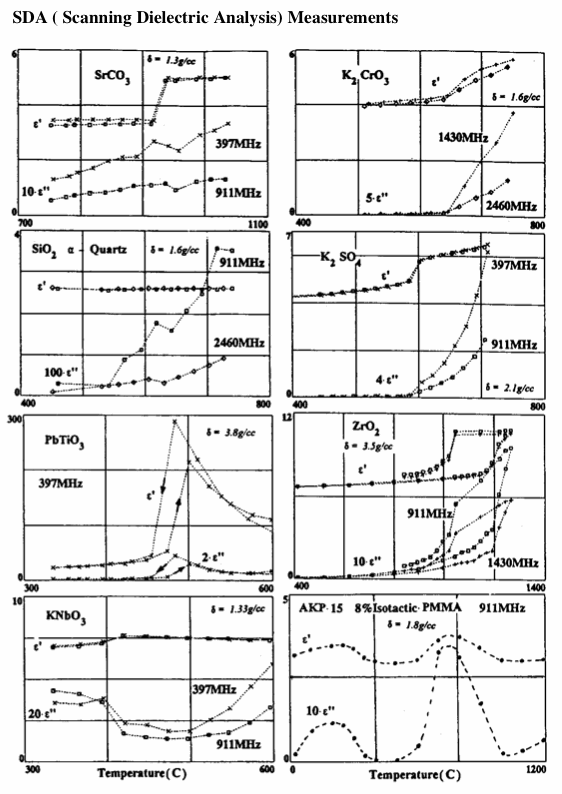
Complex Dielectric Constant of Lithium Niobate
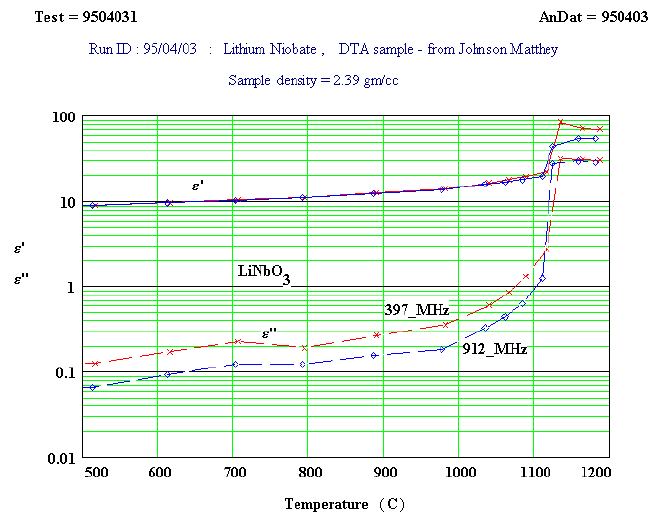
Complex Dielectric Constant of PbTiO3 - Phase Transition at 490°C with Hysteresis on Cooling
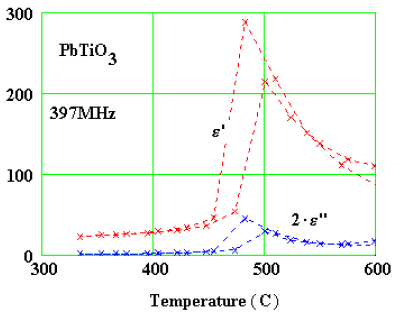
Dielectric Constant of SrCO3 : Phase Transition at 928°C
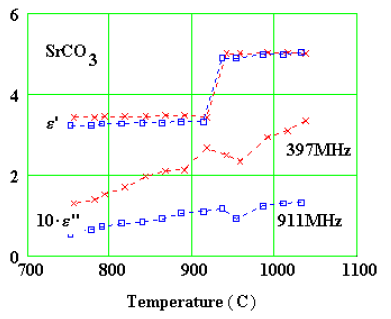
Dielectric Constant of K2SO4 : Phase Transition at 582°C
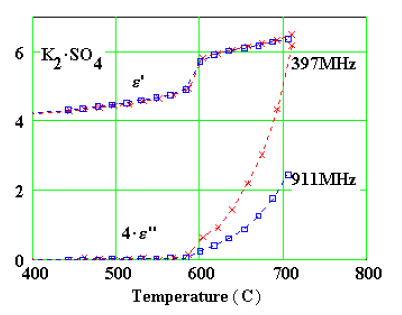
Please phone or e-mail to discuss possible measurement configurations.
We treat all communications as confidential unless advised otherwise.
Dr. Ron Hutcheon, Ph. 613 584 1029
hutcheon@magma.ca
